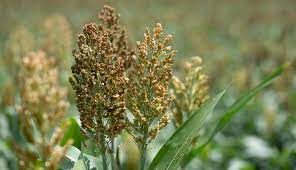No products in the cart.

Discover Sorghums Nutrition, Uses, and Benefits
Discover Sorghums: Nutrition, Uses, and Benefits
Introduction
Imagine a crop that is resilient, nutritious, and versatile. Sorghums, often overlooked, is a powerhouse among grains. In this article, we’ll explore the wonders of sorghums, from its history to its health benefits, and why you might want to include it in your diet.

Table of Contents
| Sr# | Headings |
|---|---|
| 1. | What is Sorghums? |
| 2. | History and Cultivation |
| 3. | Nutritional Value |
| 4. | Types of Sorghums |
| 5. | Culinary Uses |
| 6. | Health Benefits |
| 7. | Sorghums and Gluten |
| 8. | Sustainability and Environmental Impact |
| 9. | Cooking Sorghums |
| 10. | Sorghums in Different Cuisines |
| 11. | Future Potential of Sorghums |
| 12. | Conclusion |
| 13. | FAQs |
What is Sorghums?
Sorghums (Sorghums bicolor) is an ancient grain that belongs to the grass family. It originated in Africa thousands of years ago and has since spread across the globe. Unlike other grains, sorghums can tolerate drought and heat, making it a reliable crop in arid regions.
History and Cultivation
Sorghum has a rich history dating back to ancient Egypt and remains a staple in many cultures. It was introduced to the United States in the 17th century and is now grown predominantly in the Midwest and the South.
Nutritional Value
Sorghum is packed with nutrients. It’s rich in antioxidants, fiber, and protein, making it a great addition to a balanced diet. It’s also gluten-free, making it suitable for people with celiac disease or gluten sensitivity.
Types of Sorghum
There are several varieties of sorghum, each with its own unique characteristics. The most common types are grain sorghum, sweet sorghum, and broomcorn.
Culinary Uses
In cooking, sorghum can be used in various forms such as whole grain, flour, or syrup. Its mild flavor makes it adaptable to both sweet and savory dishes.
Health Benefits
Sorghum offers numerous health benefits, including improved digestion, reduced inflammation, and better cardiovascular health. It also supports healthy bones and aids in weight management.
Sorghum and Gluten
Since sorghum is gluten-free, it’s an excellent alternative for those with gluten intolerance. It’s a safe option for people with celiac disease who want to enjoy grains in their diet.
Sustainability and Environmental Impact
Sorghum is a sustainable crop. It requires less water than other crops like corn and wheat, making it an environmentally friendly choice for farmers.
Cooking Sorghum
Cooking sorghum is easy! It can be prepared like rice or quinoa, and it’s perfect for salads, soups, and even desserts.
Sorghum in Different Cuisines
Sorghum is used in various cuisines around the world. In Africa, it’s often used to make porridge or fermented beverages. In the US, it’s used in gluten-free baking and as a thickening agent.
Future Potential of Sorghum
The future looks bright for sorghum. As awareness of its health benefits and sustainability grows, more people are incorporating it into their diets.
Conclusion
In conclusion, sorghum is a versatile and nutritious grain that deserves a place in your kitchen. Whether you’re looking for a gluten-free alternative or a sustainable crop, sorghum fits the bill.
FAQs
- Is sorghum gluten-free? Yes, sorghum is naturally gluten-free, making it a safe choice for people with celiac disease.
- How do you cook sorghum? You can cook sorghum like rice. Use 1 part sorghum to 3 parts water, boil, then simmer for 45-50 minutes.
- What are the health benefits of sorghum? Sorghum is rich in antioxidants, fiber, and protein, which support digestion, heart health, and more.
- Where is sorghum grown? Sorghum is grown worldwide, with major producers in the United States, Africa, and India.
- What types of sorghum are there? There are several types, including grain sorghum, sweet sorghum, and broomcorn.
Go and turn on towards organic farming to save future and thire save childs:
Elevate Plant Growth with Premium Bone Powder – Buy Now!
Organic Cow Dung Compost: Transform Your Garden Naturally
Premium Humic Acid for Healthy Plants | Enhance Soil & Boost Growth
Boost Plant Growth Naturally with Mustard Cake | Organic Fertilizer
Transform Your Garden with NPK Fertilizer | Boost Growth by 30%
Premium Perlite for Enhanced Gardening | Buy Now
Live Earthworms with Enhance Your Garden (soil health)
1 Neem Khali: Unveiling the Wonders of Nature
1Transform your garden with vermiwash-buy now
1 Premium quality Vermicompost [ केचुआ खाद ]
Follow us:
Tagged Insorghums




